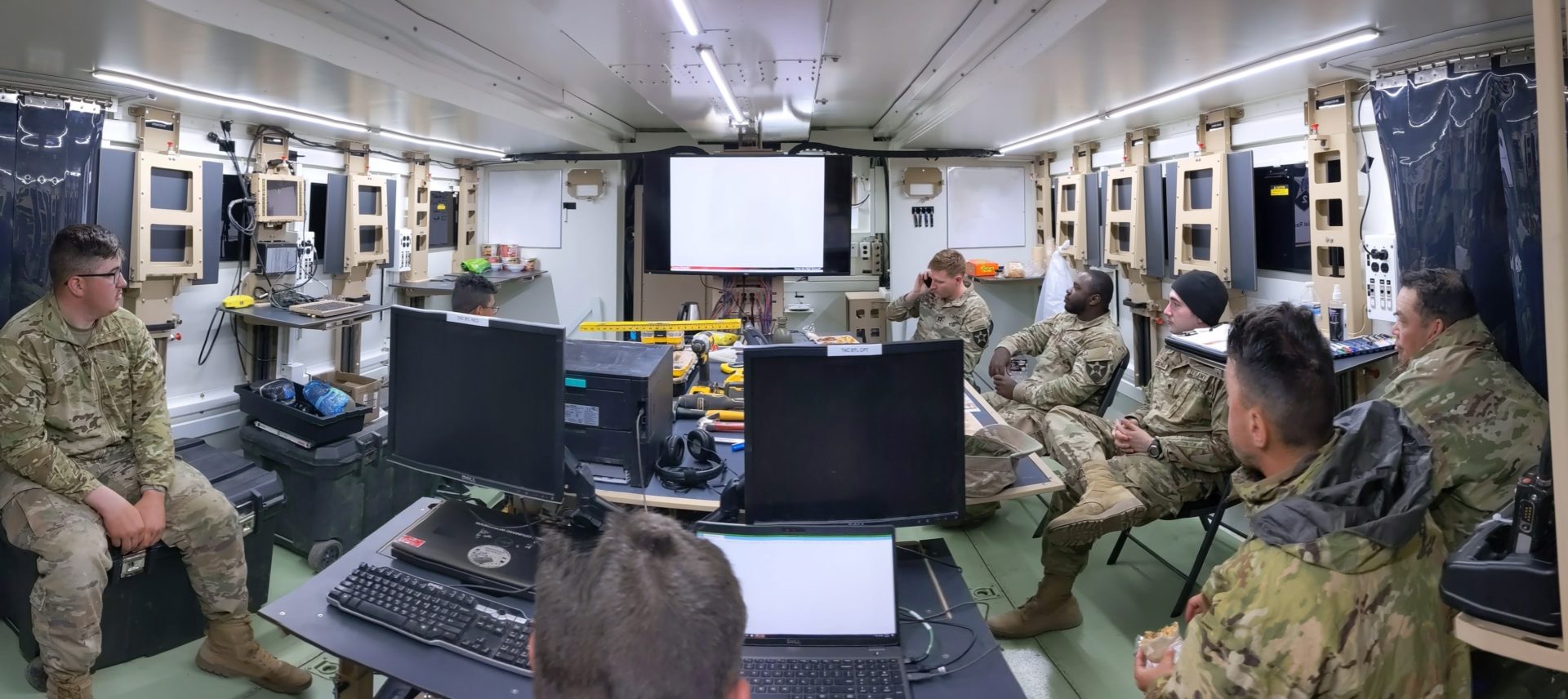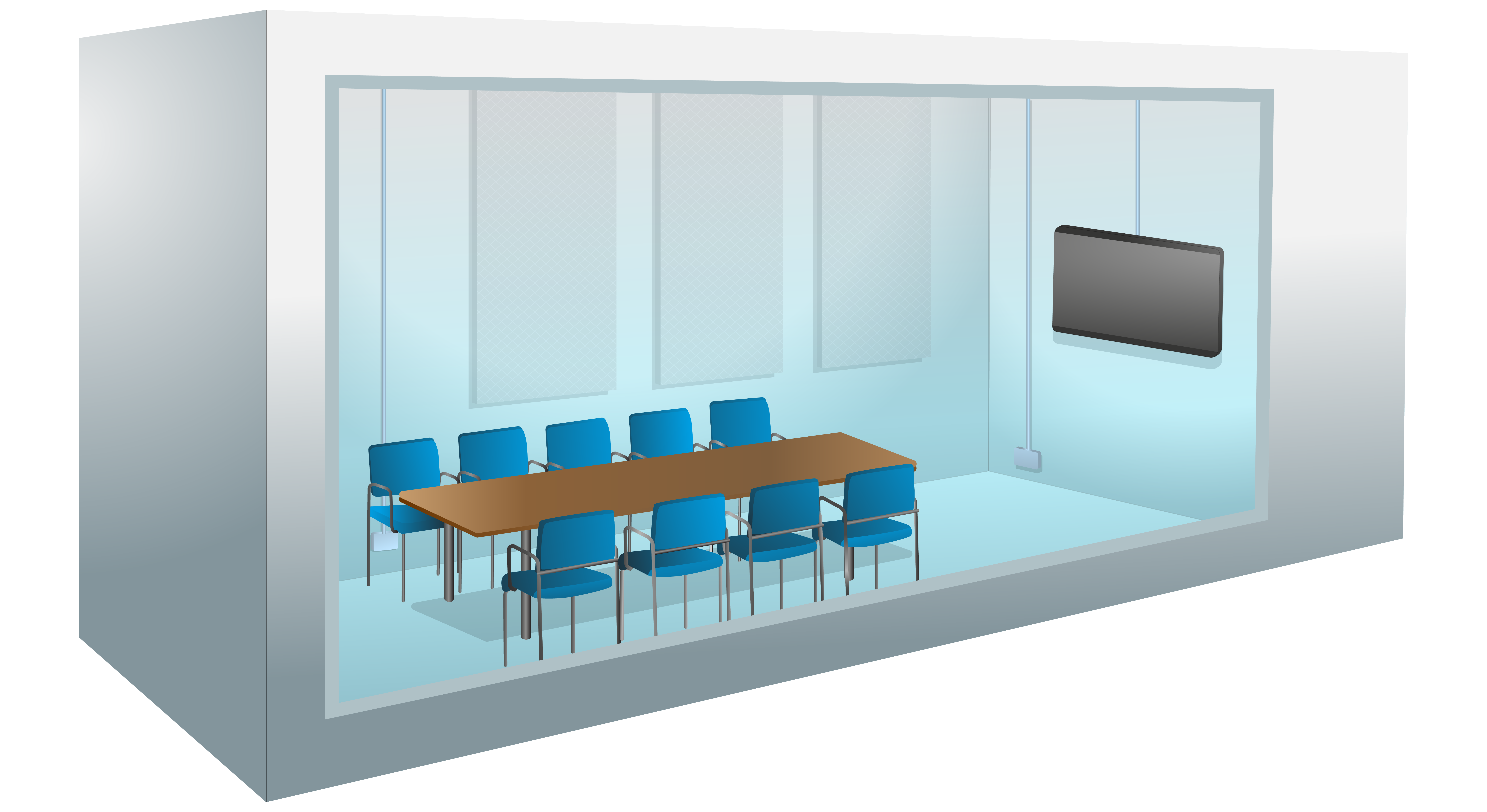News & Insights
Protecting against espionage: acoustic and technology design for SCIF rooms
A SCIF room is a secure communications facility used by government agencies and corporations to protect against espionage. Learn about the acoustic and technology design for these rooms.

Covert surveillance technology is becoming more sophisticated and accessible. To protect classified information, Sensitive Compartmented Information Facilities (SCIFs) are used for discussing military or corporate strategy, reviewing classified documents, and other activities that need to be safeguarded from espionage.
The most famous SCIF is the White House Situation Room, but SCIFs are located every place that sensitive conversations happen. In Salas O’Brien’s work, we design SCIFs for new construction and retrofit SCIFs into existing buildings for military, governmental, and commercial use. SCIF rooms have specialized technology and acoustic needs.
What’s different about designing technology for a SCIF?
Like any meeting room, SCIFs include computer systems, networking equipment, audio-visual, and control systems. The difference is that everything is required to be resistant to tampering and cyber-attacks.
Aside from infrared, there can be no wireless technology in a SCIF room, and every wire in the SCIF must be secured in an approved conveyance–such as EMT–or protected with encryption. For example, if there is a video screen on a wall, the cable needs to have a clearly identifiable path to the source to which it is connected to inside the SCIF.
SCIFs may or may not be aesthetic spaces where the technology interconnected infrastructure is hidden like in most high-finish conference rooms. Depending on the design criteria, cables may be run through raised raceways on the floor or in a cable tray under a raised floor, open or dropped ceilings with exposed cable trays and conduit, and junction boxes and conduit surface-mounted on the walls or behind a furred-out wall. (Personal phones and cameras are not allowed inside.)
Regardless of the aesthetic, these rooms have to deliver high performance. Consider the stakes of showing critical content on a video screen where the resolution must be high enough to create an exact representation.
Another technology challenge is managing any device in the space that contains a chip with memory. Equipment that has non-volatile memory, such as a computer or codec, must meet the criteria as outlined in the Communications Security (COMSEC) standards.
We work with our clients to select equipment that not only meets the security requirements but also provides Trade Agreements Act (TAA) compliance. We consult to keep approved product lists current since technologies change frequently.
Salas O’Brien not only works on the design and consulting side but also in programming and deployment. Programming has to be valid the first time because you will not be able to remote in to troubleshoot once the SCIF is delivered.
When it comes to technology, SCIF rooms are high performing, safe, and minimalist.

Why do acoustics matter in SCIF rooms?
To achieve a SCIF certification, a room must be designed to have high levels of sound isolation. This means that it must be constructed in a way that prevents sound from entering or exiting the room.
SCIF perimeters must meet a defined Sound Transmission Class (STC) so that all sounds within the SCIF are barely audible by the human ear from the outside. The goal isn’t to be soundproof, but rather to protect from acoustic or electronic eavesdropping.
To do this, special attention must be paid to the materials and methods used to construct the room’s shell (walls, ceiling, and floor). It may be necessary to use certain materials or design techniques to create an “isolated box within a box” to meet the necessary acoustic isolation requirements on all sides of the room. There are no shortcuts to achieving the necessary level of sound isolation in a SCIF room, and thorough planning is required to ensure that all requirements are met.
To achieve this, every penetration into the room needs to be examined at a granular level. Each opening in a wall—whether for ductwork, electrical boxes, or conduit—is a weakness that needs to be resolved.
For many SCIF rooms, the biggest challenge is the entry door. Even if the door panel itself meets the Sound Transmission Class (STC) ratings, the smallest gap or opening around the perimeter can compromise the sound isolation performance.
Windows create both an acoustic and visual security challenge and are often avoided in SCIF design. While not impossible, they can add significant expense to the project to achieve the recommended sound isolation.
Acoustical testing to certify a SCIF requires following the Unified Facilities Criteria (UFC) for SCIF rooms. Specific testing includes using a speaker as a noise source in the interior of the room and a professional-grade sound level meter is used to take readings both inside and outside of the space. From these measurements, the amount of sound transmission loss through the wall can be calculated to ensure they meet the design criteria.
Design challenges for SCIF rooms
SCIFs are built to exacting standards.
Most SCIF rooms for the Intelligence Community (U.S. Department of Defense) follow Intelligence Community Directive 705 (ICD-705). This directive not only defines the parameters for design and construction, but also how the rooms are verified and maintained so they remain secure over time. Commercial SCIF rooms and specific government agencies have their own sets of similar requirements.
Directives alone aren’t enough to create a functioning SCIF room. The design requires high interaction with the client to define the specific needs for their specific use case. Every step between design and implementation requires collaboration with cyber and physical security teams to ensure that all security protocols are being followed and that the final product meets all necessary standards.
Once construction is complete, the SCIF room will need to be tested and inspected to ensure that it meets all relevant security and performance standards. This process typically involves running a series of simulated scenarios to ensure that the room is able to withstand a variety of potential threats and that all systems are functioning as intended.
Salas O’Brien has deep experience designing acoustics and technology (AV, IT, and security) for SCIF rooms. We have a reputation for creating highly secure and effective solutions for a range of industries, including government agencies, defense contractors, and Fortune 500 corporations. Our team of experts provides tailored solutions that meet the unique needs and requirements of each client. Whether you need to maintain secure communication in a high-risk environment or simply want to improve the overall acoustics of your space, we have the skills and expertise to deliver exceptional results.
Contact us to learn more.
For media inquiries on this article, reach out to Stacy Lake.

Vance Breshears, LEED AP
Vance Breshears is a specialty consultant to architectural and construction firms for acoustics and technology. A Marine veteran, Vance specializes in federal projects with a high degree of complexity. Vance is adept at collaborative processes that align expectations with budgets and brings the entire team together working under common goals. Vance is a Senior Vice President with Salas O’Brien. Contact him at [email protected].

Ben Gleason, CTS-D, CTS-I
Ben Gleason’s expertise is in technology design for spaces—such as SCIF’s—where performance demands are high. Ben’s reputation for innovative solutions combined with his attention to detail make him a sought-after designer by federal agencies and defense clients. Ben is a Senior Consultant with Salas O’Brien. Contact him at [email protected].

Krisi Hinova, INCE Board Cert.
Krisi Hinova is a specialist in acoustic modeling, mechanical noise control, sound isolation, and environmental acoustics. Krisi has a Master’s in Mechanical Engineering and is deeply experienced in design for SCIF rooms and other Department of Defense projects. She is a Senior Consultant at Salas O’Brien. Contact her at [email protected].

Rodrigo Ordóñez
Rodrigo Ordóñez is an expert in technology for legislative facilities including custom programming for the U. S. Senate and U. S. House of Representatives. Rodrigo understands the needs of federal agencies for classified conversations and is skilled in design, commissioning, and programming audio DSP systems, networks, and AV control systems. Rodrigo is a Principal at Salas O’Brien. Contact him at [email protected].